Rob Dixon, known as Radix, is a code-based generative artist merging technology and creativity to explore human experiences in digital spaces. Starting with Adobe Flash in the late 1990s and later joining Adobe’s Flash Player team, he crafted visuals that laid the foundation for his distinctive style. Entering the NFT space in 2020 through Art Blocks, Rob gained recognition for works like Inspirals and Eccentrics. Influenced by sci-fi, Art Deco, and mission-style design, he continues to push his creative and technical limits through generative art.
In this interview, Rob discusses his artistic journey, from Flash to NFTs, sharing the inspiration behind Exposures, his upcoming MakersPlace exhibition, which will debut at the inaugural Miami Digital Art Fair. He reflects on the evolving metaverse, the social power of digital spaces, and how influences like game design, sci-fi, and architecture shape his work. Join us for an insightful look at art and innovation at the intersection of the digital and physical worlds.
Visit Rob’s MakersPlace Gallery
Text output for Exposures by Rob Dixon
BW: Rob, for anyone unfamiliar with you and your work, can you tell us a bit about your journey as an artist?
RD: Sure. I’m Rob Dixon, also known as Radix. I’m a code-based generative artist, which means I create art using software I write myself.
I started in the late ’90s with Adobe Flash, making fun web-based graphics. Eventually, I joined the Flash Player team at Adobe, where I worked on artwork, game samples, and music visualizers. That’s where my generative art career began.
Years later, I explored game development and blockchain technology, which led me to NFTs around 2015–2017. In 2020, I discovered Art Blocks, and everything clicked. Generative art as NFTs had an audience, and I finally had a way to share my work.
BW: I’m curious about your Adobe job—it sounds like a dream gig. Was it as experimental as it seems?
RD: It was. I got to experiment and develop ideas. The engineering team would create features, like a pseudo-3D system, and I’d make something to demo it. Then I’d document the feature, becoming the go-to expert on it. It was exciting and creative work.
BW: From week to week, were you just creating new things in Flash and documenting them?
RD: Pretty much. I even co-wrote a couple of books about the ActionScript language, including reference documents and stable builds. Not that anyone uses them now, but it was cool at the time.
BW: One of my favorite artist duos worked entirely in Flash. When Flash was deprecated, they had to find another tool.
RD: That’s a common story. Many artists, like Casey Reas, Joshua Davis, and Mario Klingemann, started with Flash. It was a gateway for a lot of creatives.
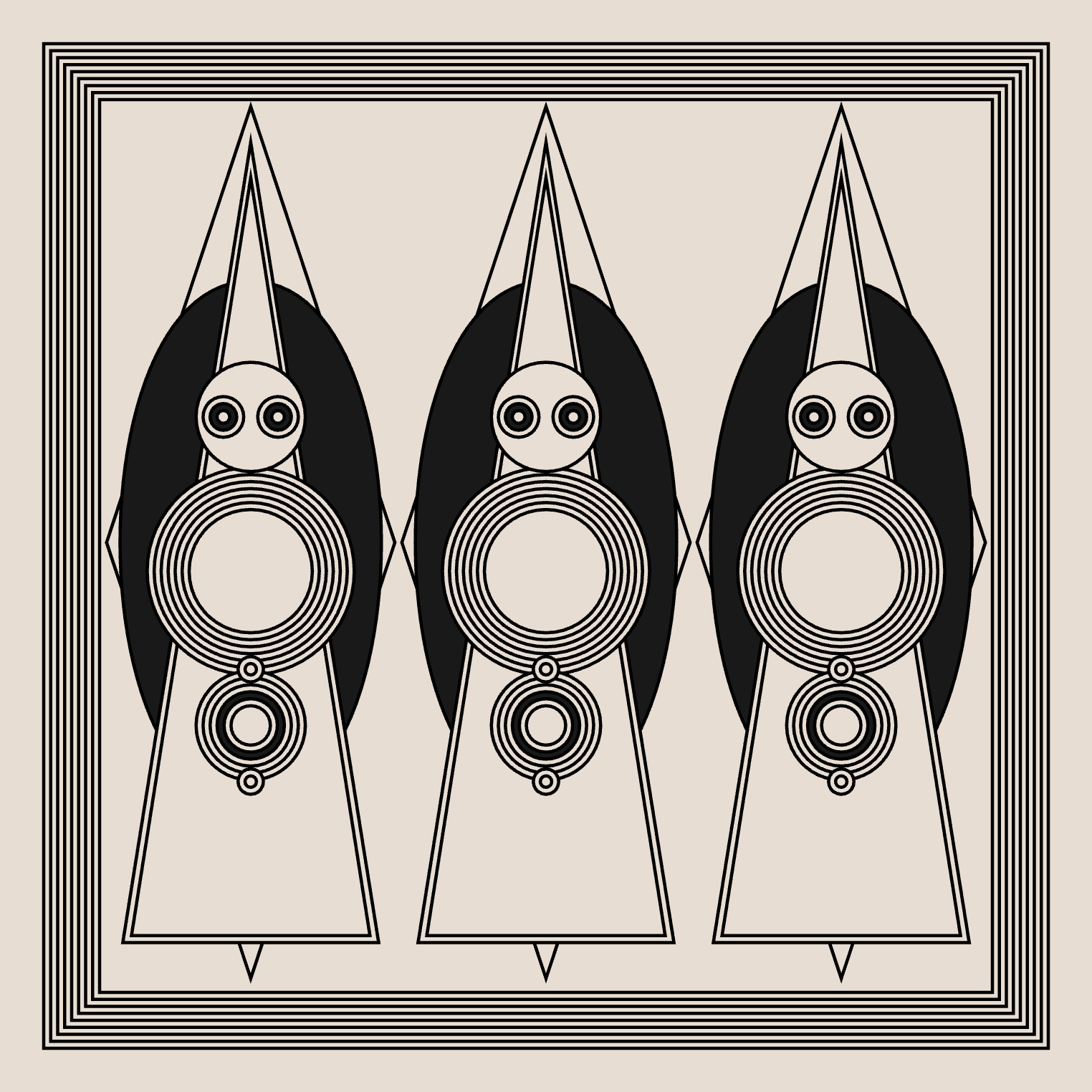
Eccentrics 2 #274 by Rob Dixon
BW: You discovered NFTs while researching for a novel. Are you still writing?
RD: A little. I have a mostly finished sci-fi novel about a metaverse-like world on blockchain. While researching in 2017, I discovered Decentraland, got involved early, and became an active contributor in their 3D world.
It was my first exposure to NFTs. Decentraland, along with Dapper (the creators of CryptoKitties), collaborated on the original NFT spec. Their land parcels were among the first NFTs, which was fascinating and pulled me deeper into the space.
BW: What’s your current relationship with the metaverse and Decentraland?
RD: I created about half a dozen games in Decentraland, including Wonder Mine, which was the most popular game on the platform for a couple of years and is still active.
Decentraland has had ups and downs. At its peak, WonderMine had 10,000 daily users. Now it’s a few hundred, as people have more entertainment options post-pandemic.
That said, I think the metaverse will have a resurgence. It’s influenced my art, especially my latest project, which explores how people inhabit digital worlds.
BW: Where do you see the metaverse going in the next one to three years?
RD: I think it’s here to stay, though it will evolve. What I’ve learned as a game developer is that the metaverse’s real strength lies in its social aspect.
In my previous games—mostly mobile games and social casino games—gameplay was usually a solo experience. But in the metaverse, it’s different. The games we created would intentionally build in downtime, where players had to wait a minute or two. That led to people chatting with each other while they waited.
It created this incredible social hub. People formed communities and kept coming back every day at the same time to hang out, see what new wearables others had, and show off their own. “Look, I can fly today—I bought wings!” It became a genuine social phenomenon.
That’s the sweet spot for the metaverse. It’s not about solo adventures; if you want that, you can play a standalone video game with better graphics and deeper gameplay. The metaverse is about goofing around for a couple of hours, hanging out with friends, and chatting—while maybe flying on the back of a dragon.
BW: I think about the promise of the metaverse, VR, and AR. As someone who works from home, some days I don’t even leave the house. A lot of skeptics see the tech’s current shortcomings as failure, but I think the potential is huge—especially as more people work remotely and crave social connections.
RD: Definitely. For most 3D worlds, you don’t even need a headset—just a website. VR and AR will take off when it’s as simple as wearing glasses you can use while going about your day. Right now, the bulky headsets are just too inconvenient.
BW: Tech products have been designed by brains for brains, not by bodies for bodies. Once we get tools that let us move and manipulate space, it could change everything.
RD: Exactly. One great use of 3D spaces is displaying artwork. Virtual galleries are already a thing, but people are building them in other metaverse spaces too. You can project massive, stunning artwork, including 3D sculptures.
For example, my Ballistics collection featured 3D sculptures that built up and animated. You could view them on the web, in augmented reality, or in Decentraland for a metaverse version. These spaces will continue to be valuable for showcasing art and creating experiences.
BW: Ballistics is really cool—it might be my favorite of your work. Before we dive into it, how does your game design background influence your visual art?
RD: A lot. I got into game development because I wanted to be creative. After years in hardcore tech, I wanted to branch out. Game development gave me that outlet.
Now, I can create purely for the sake of it without worrying about commerce, and that influences every project I’ve done.
For example, Eccentrics has a vintage sci-fi vibe, even though it’s abstract. Sci-fi, games, and similar influences always find their way into my work. My New Exposures project also reflects some of that.
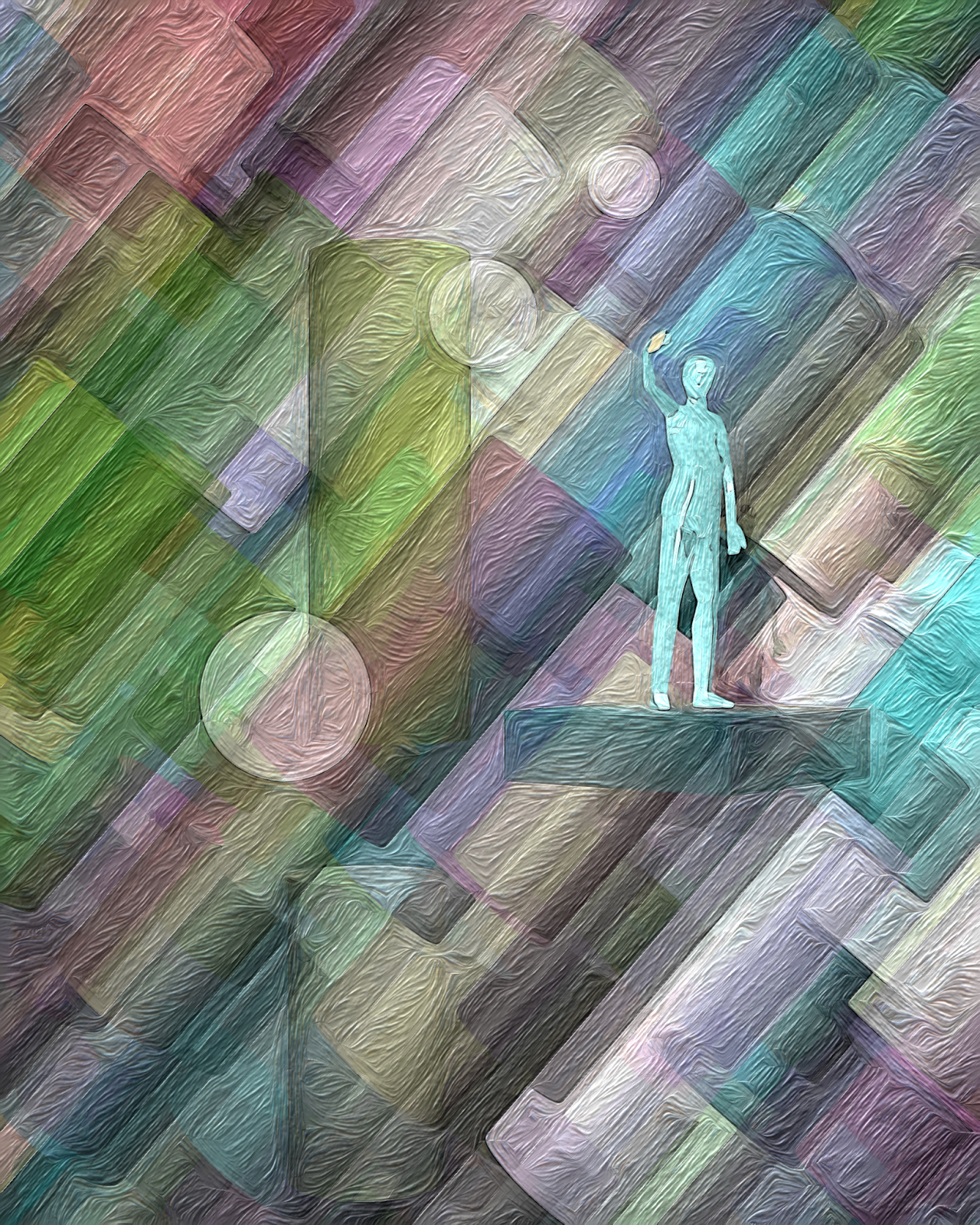
Test output for Exposures by Rob Dixon
BW: Let’s talk about Exposures, which is coming up at the Miami Digital Art Fair. Was there a particular moment that inspired it?
RD: There were two key moments.
First, I went to a dance recital rehearsal for one of my teenage kids’ friends. The dancers were performing beautifully, but many of them were holding their phones while dancing. It was the craziest thing to me.
Second, my son’s class visited the pyramids in Mexico. The teacher shared a photo of the students sitting at the base of a pyramid—all of them staring at their phones, texting each other, and missing the incredible scene behind them.
It made me think about how technology changes the way we behave and relate to each other. That became the theme for Exposures: representing digital or metaverse spaces and showing how people interact within them.
Some characters in the pieces are inspired and engaged, while others are completely distracted, missing the moment. Every character has a phone—if you zoom in, you’ll see it. I almost called the project Selfies in Abstract Land because that’s what people do in these colorful, wild spaces: take selfies.
BW: These are virtual spaces, but why the painterly textures?
RD: I wanted to ground it and balance the digital with the human. Most of my previous work is sharp and geometric, and I kept that here, but I didn’t want to lose the human element.
Bringing in characters was key, though it’s not common in code-based generative art. The challenge was creating simple 3D models—less than 1,000 polygons—to keep file sizes small for on-chain projects. The brushstroke textures came from softening the angular forms, imagining a painter in the metaverse doing plein air art.
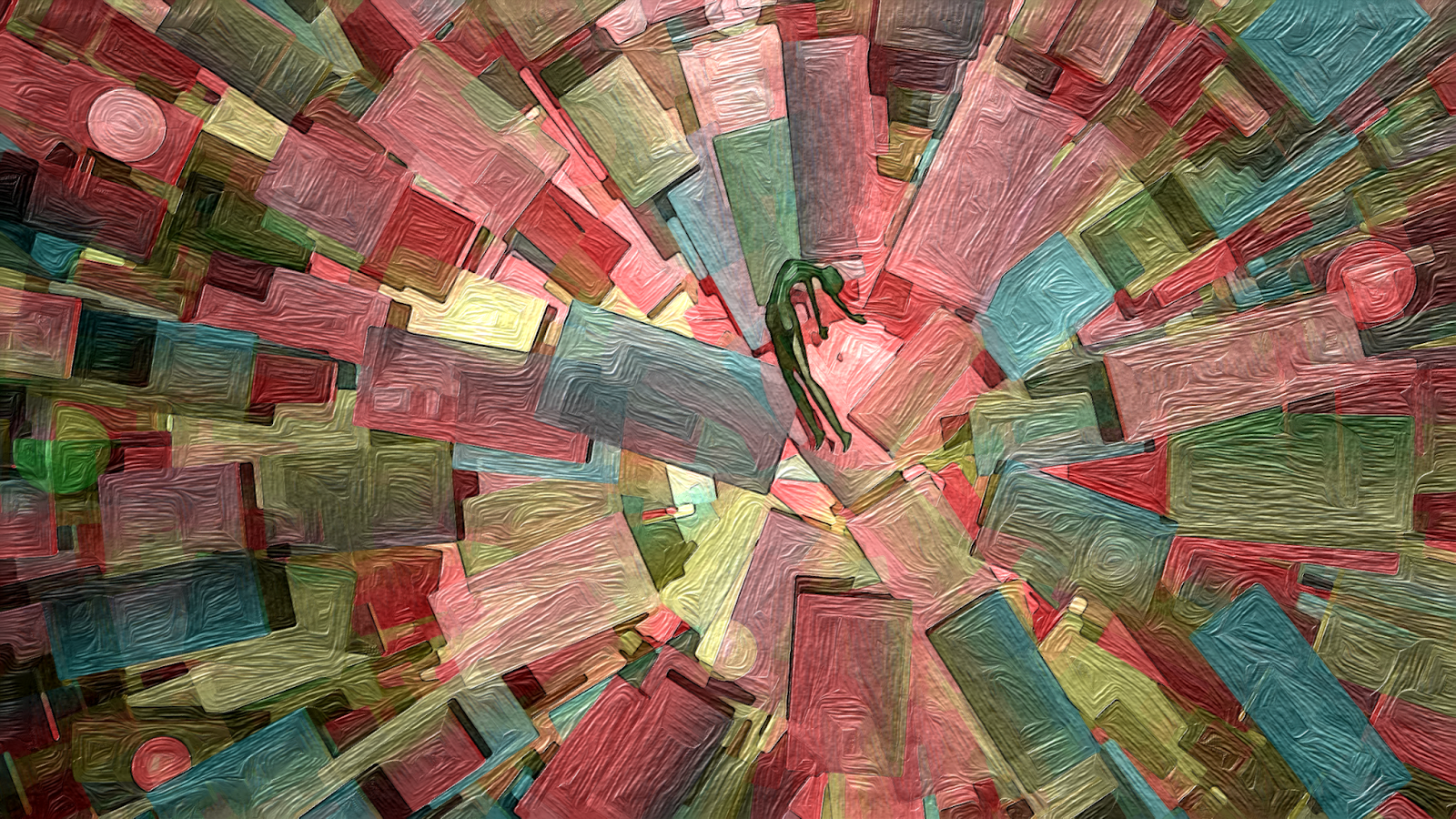
Test output for Exposures by Rob Dixon
BW: The figures remind me of artist mannequins. I know you pushed your technical limits on this project. What was that process like?
RD: It was intense. The project took about a year. Most generative art is abstract because it’s easier in software, but I wanted something more compositional, with figures inspired by watching my kids glued to their phones.
I realized 3D models were the way to go, but they had to be simple enough to look good and small enough for on-chain use. I essentially rebuilt my tools from scratch, drawing on techniques I’d used in Ballistics.
After designing and posing the models, I optimized everything for on-chain deployment. It was months of retooling, but it all came together in the end.
BW: Yours will be our second long-form generative series. Our first was by Juan Rodríguez García who also struggled to represent the human form in generative art. In the same exhibition, at Art Basel, we also showed Operator, which I think is the only other on-chain generative series exploring the human form. It’s rare but compelling—this medium is so abstract, yet artists still find ways to include the human figure.
RD: Exactly. It changes everything. At first, I wasn’t sure it would work. The detailed models I tried felt out of place—like a 3D model dropped onto a picture. Simplifying the figures, making them angular and semi-transparent, solved that problem. The transparency ties into the theme of exposing ourselves online, which is also where the project’s title comes from. Once I made those changes, everything clicked.
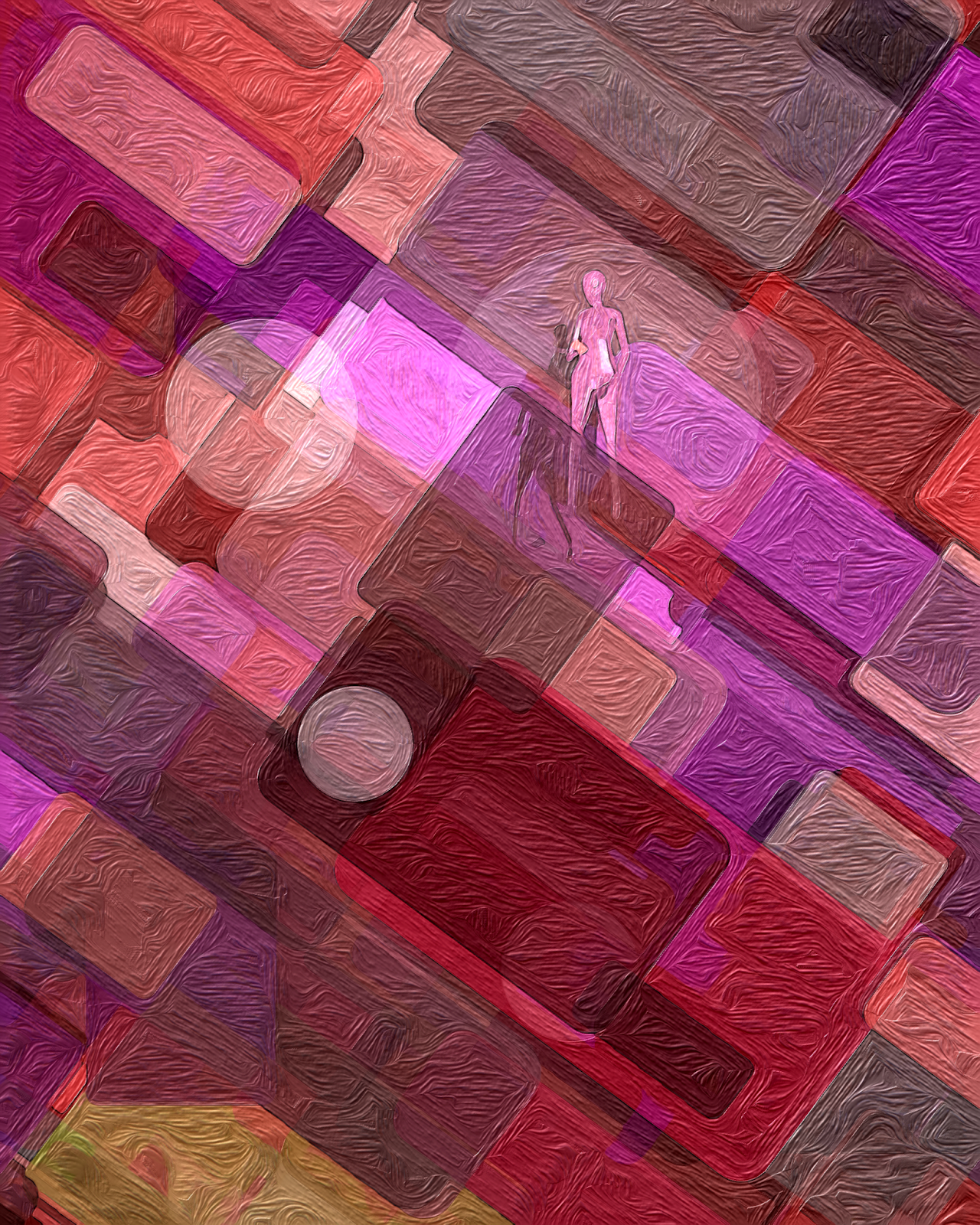
Test output for Exposures by Rob Dixon
BW: The transparency adds so much. It reminds me of how online spaces can be invasive, changing who we are—like sitting at the base of a pyramid, staring at your phone instead of talking to the people around you.
RD: Exactly. These pieces explore the personas we adopt online—outgoing in one space, quiet in another. It’s how we navigate different environments. This series reflects those competing aspects of ourselves, for better or worse.
BW: I really like this series, but I still think Ballistics might be my favorite. What inspired that?
RD: Ballistics started as my first deep dive into 3D. I wanted to create something for the metaverse, like sculpture gardens where you could own pieces, place them anywhere, and hang out with friends.
I also needed the sculptures to work across platforms—web, augmented reality, and the metaverse. To achieve that, I used simple shapes like cubes, spheres, and cylinders, which render consistently across all platforms.
The sculptures animate as they build up, creating a dynamic experience. At Art Blocks’ activation in Marfa, Texas, people could place an augmented reality version on any surface and watch it build. Walking into the sculpture allowed you to look up and around as the shapes fell on either side.
BW: That sounds incredible.
RD: Thanks! The idea was to create “public sculptures for online spaces,” like a fountain in a public square—shared, inspiring, and interactive. The animations evolve endlessly, creating spaces for people to gather and experience together.
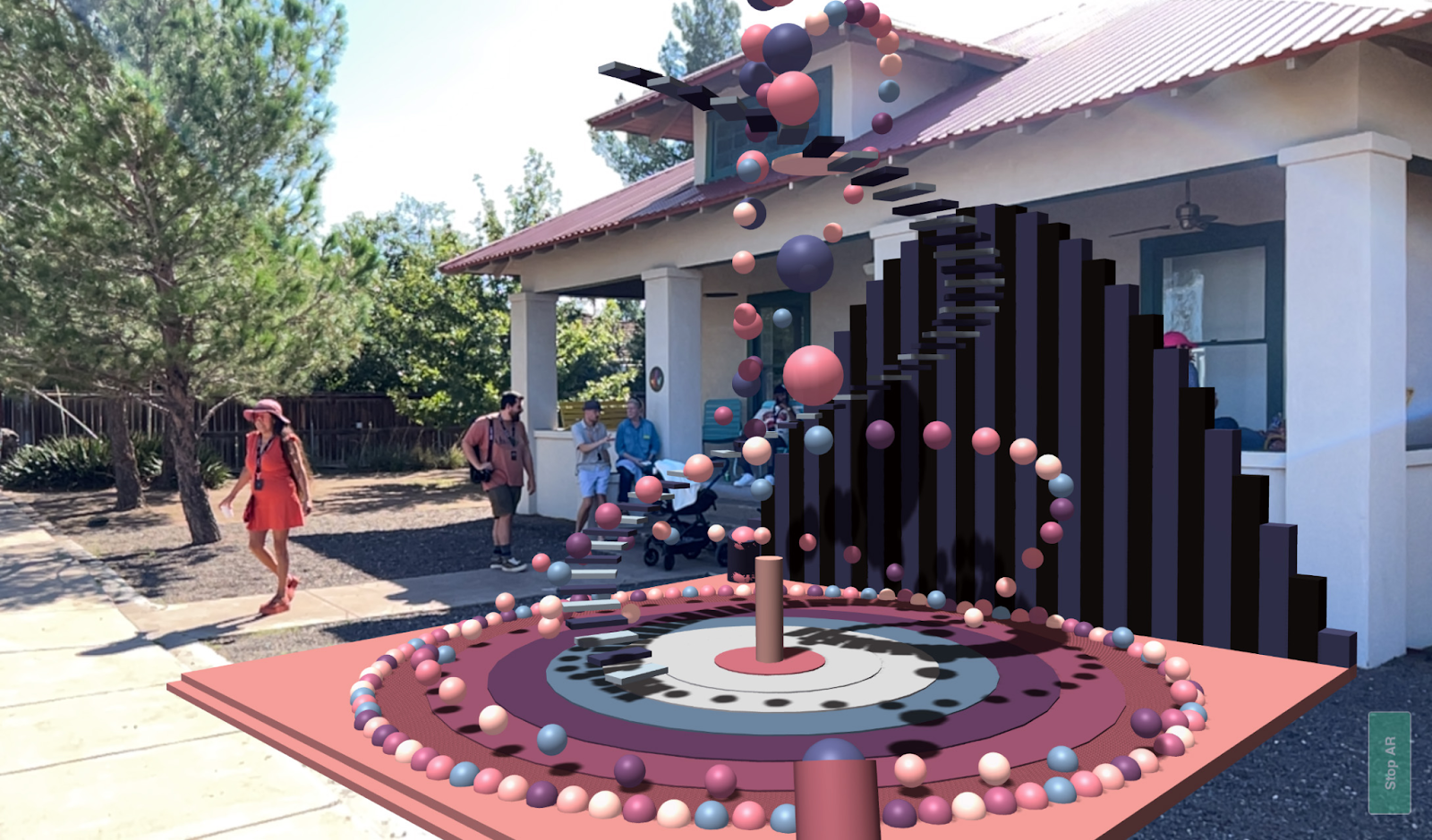
Ballistics sculpture #1002 outside the Art Blocks House
BW: Do you have a way of knowing where the sculptures are placed?
RD: That’s the plan. I want owners to be able to geo-locate sculptures—for example, placing one on the Golden Gate Bridge and letting others see it there.
In Decentraland, there’s a gallery where you can interact with these sculptures, run around them, and sync with music. Sometimes people even throw little parties there—it’s a lot of fun.
BW: How do improvisation and mistakes play into your process, especially in a code-based workflow?
RD: Improvisation is key. Early on, it was pure experimentation—trying things until something clicked. Now, I start with concepts and compositions but still experiment constantly, especially with color palettes.
For Exposures, I tested all my previous palettes to see which worked. Transparency made it tricky because colors blend—you have to avoid muddy results. It was a lot of trial and error.
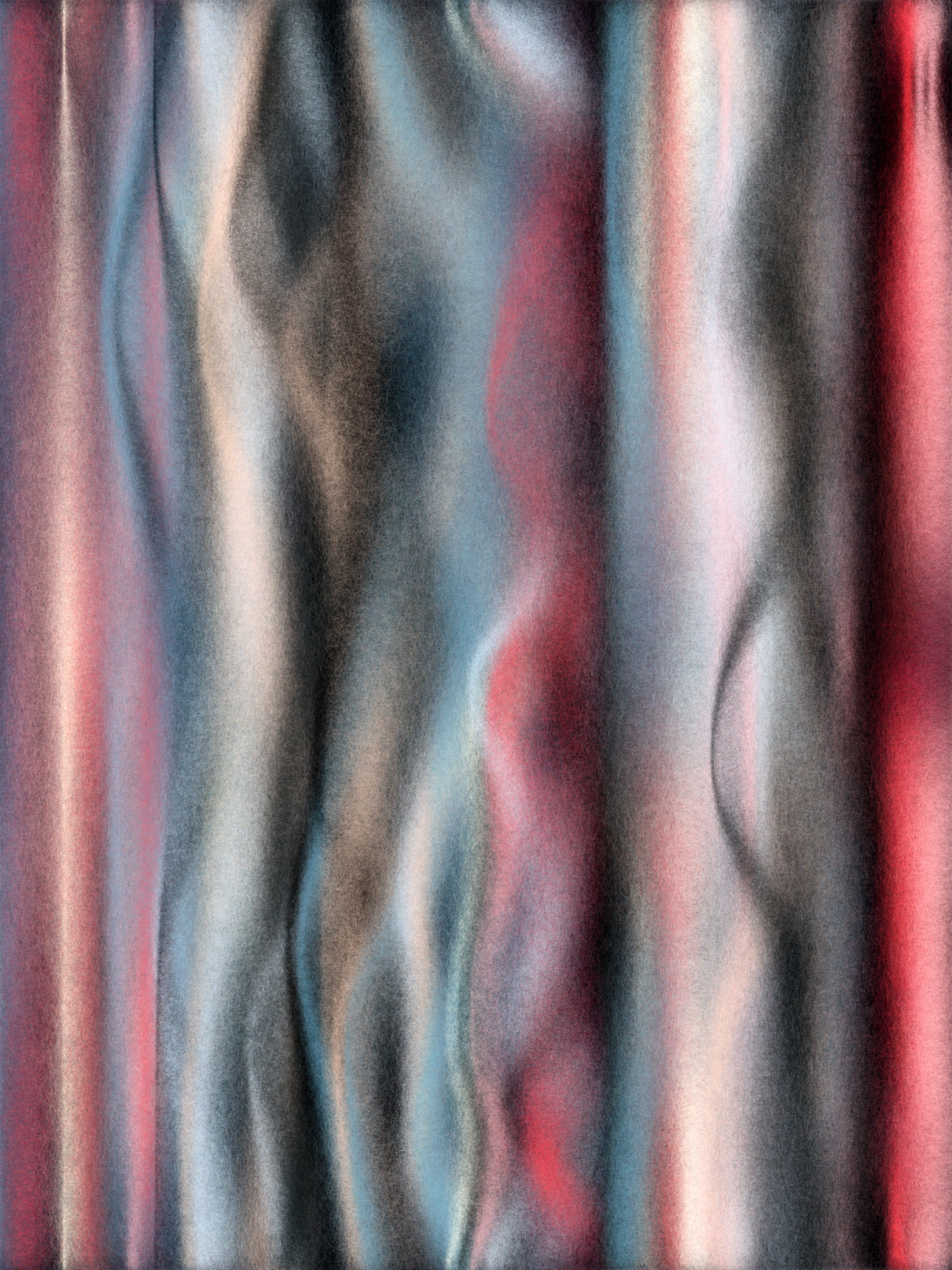
Windwoven #0 by Rob Dixon
BW: Seems like you’d need to review tons of outputs to find the right palettes.
RD: Definitely. Some palettes work half the time, but once one looks good, it usually carries through. Take Windwoven. Its palette was based on tropical fish, and I reused it in Exposures, where it worked beautifully on a few pieces.
BW: I’d love to hear more about Wind Woven. It seems to have evolved a lot.
RD: It did. It started with simple shapes—rectangles and circles—creating smoke-like patterns. Originally, it was meant to be 3D, but I experimented with flat, open circles and ellipses with high transparency.
Layering those shapes created textures that felt like wool or fabric. The final pieces are just millions of transparent open circles, but the effect is completely organic.
BW: Let’s talk about Inspirals. You mentioned it’s a reimagining of an earlier idea.
RD: Right. This piece, for example, starts with a repeating pattern extended infinitely. The idea comes from mathematical tessellations. I found a way to spiral flat patterns into infinity and make them more complex through distortions and indentations.
This one was serendipitous—it’s piece #666, complete with devil horns.
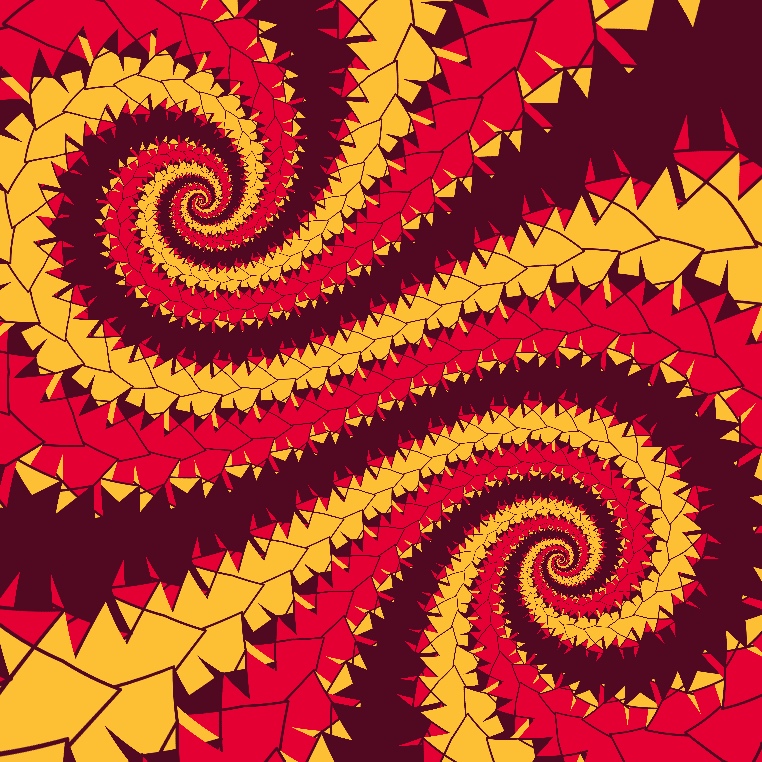
Inspirals #666 by Rob Dixon
BW: I was going to ask about that. The palette and vibe are very 666.
RD: Totally fits. With tessellated patterns, you can usually only work with three colors. Adding more disrupts the harmony, so all these images use three-color combinations.
BW: Can you walk me through your project workflow?
RD: It depends on the phase. Early on, it’s all about concept and experimentation—sketching ideas and testing them in code. I avoid finalizing anything too soon to let ideas develop.
Once the concept is clear, I move into a structured approach, breaking the project into phases. For Exposures, I spent a month modeling and posing characters, then another month refining the rendering style to ground everything.
Refinement takes the longest—ensuring variety and avoiding duplicates. With generative art, random outputs can produce pieces that don’t meet expectations. For Exposures, we might pre-curate some outputs to ensure a better collector experience while keeping the live generation process intact.
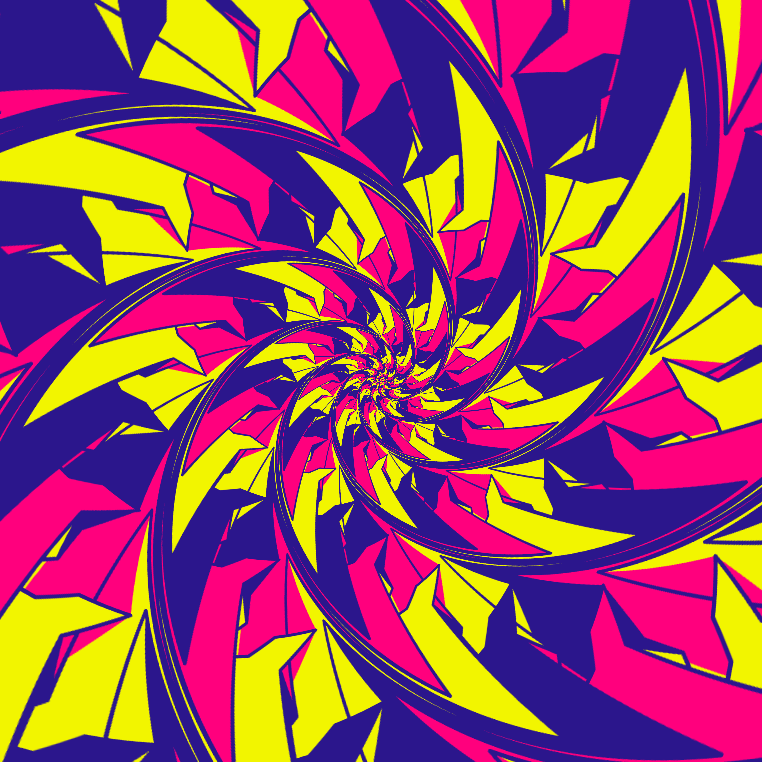
Inspiral #733 by Rob Dixon
BW: Do you have any unrealized projects that feel too ambitious to tackle?
RD: Since my second long-form project, Eccentrics, I’ve had a big idea in mind. Every project since has been building toward it, piece by piece.
Exposures represents the current state of that vision. It combines elements from my earlier work: the compositional focus from Eccentrics, geometric portal-building, organic textures from Windwoven, and now painterly elements and figures.
Eventually, I’d like to expand into something closer to the world-building I do in games, but tackling it all at once would’ve been too much. These projects are steps toward realizing that vision.
BW: That sounds like macro-level project management—breaking a huge idea into stepwise projects.
RD: Exactly. The beauty of generative, code-based art is that you can keep building on previous work and reapplying elements in new ways.
For updates on all of our upcoming editorial features and artist interviews, subscribe to our newsletter below.